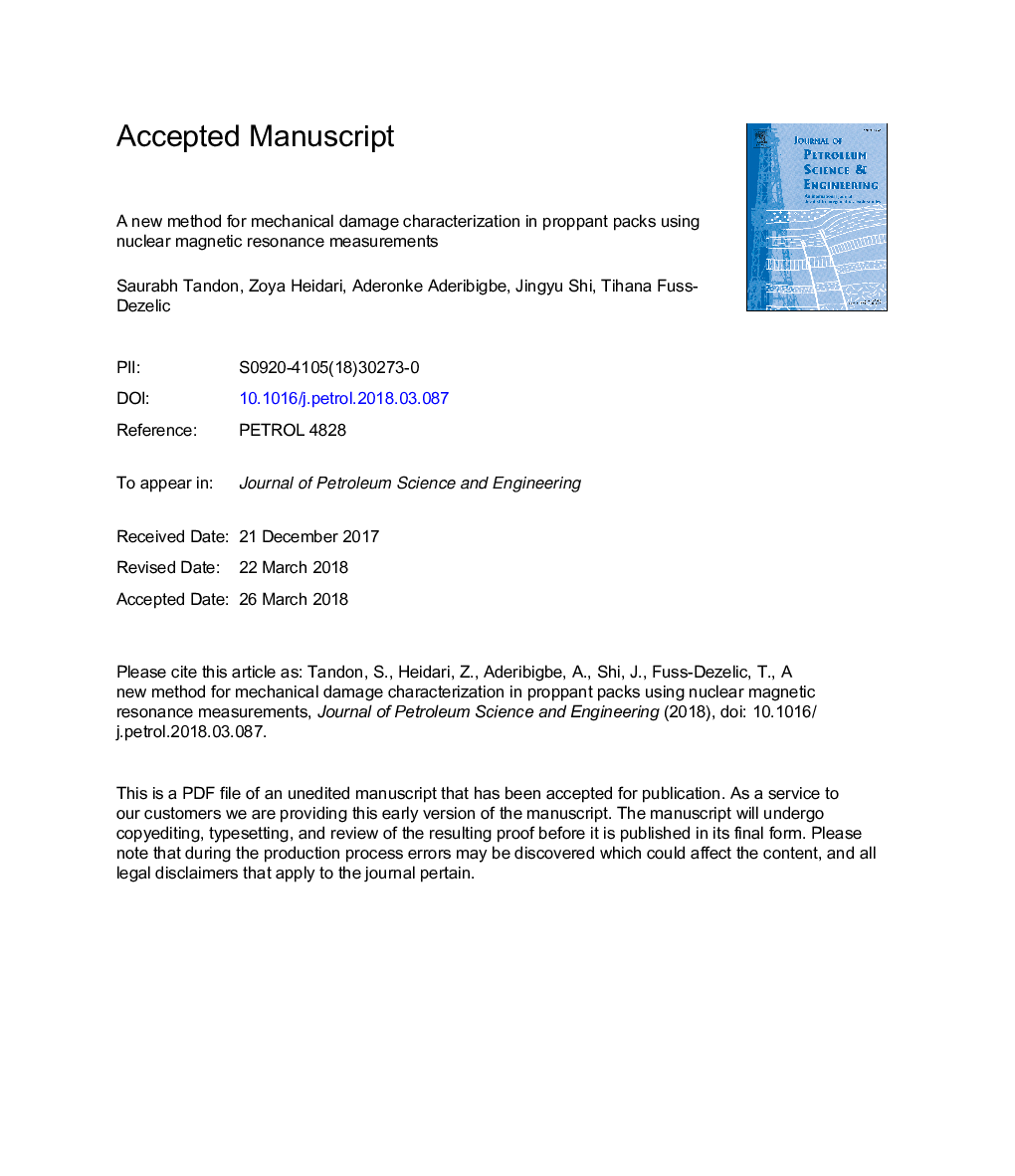| Article ID | Journal | Published Year | Pages | File Type |
|---|---|---|---|---|
| 8124793 | Journal of Petroleum Science and Engineering | 2018 | 23 Pages |
Abstract
Results showed that NMR T2 distribution is sensitive to pore-size distribution in the proppant packs. The variable pore-size distribution was either a consequence of having a mixture of proppants with different sizes or different levels of mechanical damage. The impacts of fines on the pore-size distribution of the proppant packs was measureable, which is promising for the successful application of the introduced method for time-lapse quantification of generated fines. We also observed a measurable sensitivity of T2 distribution to mechanical damage in the proppant packs, which enables quantifying the level of damage in proppants through quantifying pore structure in the proppant packs. The NMR T2 measurements were, however, sensitive to the presence of paramagnetic materials such as iron in proppants. This sensitivity was more significant in cases where paramagnetic materials were distributed on the proppant surface. The proposed method is considered as an indirect measurement of pore structure and could potentially provide a quantitative assessment of the proppant pack conductivity both in the lab-scale and in-situ conditions. Improved assessment of proppant conductivity can help in enhancing the design and execution of fracture treatments for successful development of unconventional plays.
Related Topics
Physical Sciences and Engineering
Earth and Planetary Sciences
Economic Geology
Authors
Saurabh Tandon, Zoya Heidari, Aderonke Aderibigbe, Jingyu Shi, Tihana Fuss-Dezelic,
